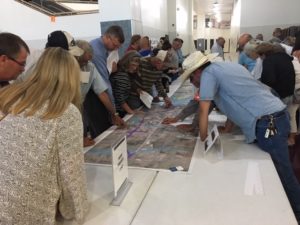Blogger’s Note: This item was published originally on KETR-FM’s website. High Plains Blogger wanted to share it here. Enjoy.
This isn’t the biggest bill ever to die a quiet death in the Texas Legislature, but it might be one of the more talked-about once lawmakers decide to pack it in for this session and head home to their respective districts.
It’s the bill that would have allowed Texans to vote later this year on whether to ditch the twice-yearly time change – from Standard Time to Daylight Saving Time … and back again.
The Texas Senate, apparently because of “inaction” by Lt. Gov. Dan Patrick, has allowed the bill to wither away and die. Texans won’t be voting on this measure in the fall.
Too bad? Well, that depends, I suppose, on your point of view.
For me, it makes no never mind.
Every year – first in the spring and then in the autumn – we gripe and moan about the time change. We holler in the spring when we move the clocks ahead and lose that hour of sleep; some of us are late for worship services that Sunday (because the time change occurs officially at 2 a.m. those days). Then we yap in the fall when we set the clocks back an hour, regaining that hour of sleep we lost in the spring; I don’t know this with any certainty, but perhaps some of us even get to our house of worship an hour early.
None of this ever has bothered me.
I understand the reason for enacting Daylight Saving Time. It was done initially to conserve energy. We get more daylight later in the day and don’t have to turn on the lights quite so early. Thus, we conserve valuable electricity, which is powered by, oh, the finite supply of fossil fuel. Oh, sure, we rely more in Texas these days on wind power, the sun and maybe some bio-fuels produced from corn and other crops.
But the clamor to switch to the same time all year long is a bit overheated to suit my taste.
The bill’s author, state Rep. Lyle Larson, R-San Antonio, said Texans supposedly have passionate views on the issue. I presume he means “all Texans.” Count me out, Rep. Larson. I ain’t one of ‘em.
For the record, if I had the chance to vote on which time to use, I’d stick with Daylight Saving Time. Why? I like the extra sunshine in the evening. Yes, it also saves energy.
But it’s all for naught, right?
Maybe not. There might be a special session in our immediate future this summer if Rep. Larson and his House allies feel strongly enough about it and can persuade Gov. Greg Abbott to call one and then put the time-change issue on the agenda.
But I hope not.




